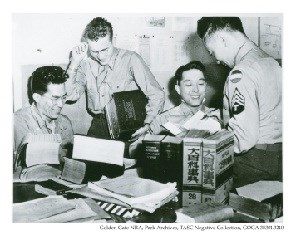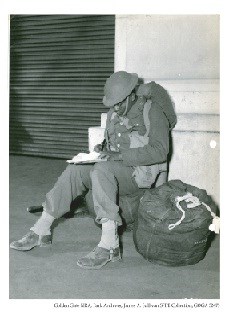|
The U.S. Army looks inwards as the world enters war. Tremendous pre-war mobilization effort expands and develops military bases for the thousands of men processing through San Francisco on their way to the Pacific Theater. 
Golden Gate NRA, Park Archives, SutroDistrict Collection, GOGA-3369

Golden Gate NRA, Park Archives, TASC Negative Collection, GOGA 35301.3210

Credit: U.S. Army, Golden Gate NRA, Park Archives, James A. Sullivan SFPE Collection, GOGA 32475

Golden Gate NRA, Park Archives, PAM Negative Collection, GOGA 35256.0620
Original panel for "World War II Era (1933-1954)" (PDF, 199 MB) |
Last updated: February 28, 2015
